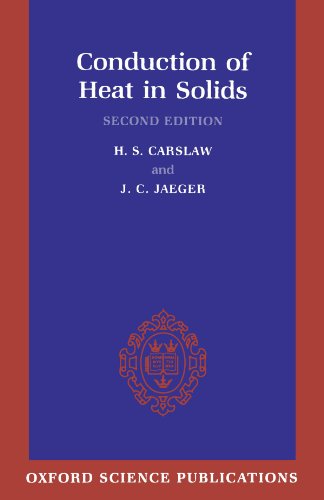Conduction of Heat in Solids pdf free
Par vasquez edward le lundi, juillet 11 2016, 16:37 - Lien permanent
Conduction of Heat in Solids by H. S. Carslaw, J. C. Jaeger


Download eBook
Conduction of Heat in Solids H. S. Carslaw, J. C. Jaeger ebook
ISBN: 0198533683, 9780198533689
Page: 517
Publisher: Oxford University Press, USA
Format: djvu
I merely didn't want to derail your present argument. Improving your home's energy efficiency is one of the best investments you can make, paying tax-free dividends immediately in the form of lower heating costs. Heat always flows from an area of high energy to an area of low energy. This process of heat flow is called conduction and happens in solids such as metals.This is because the particles or atoms are close together. Conduction; that is, heat being transferred from a heated solid to an unheated solid. Monsieur Be • Conduction of heat in solids, Plage du Centre, Bidart. Even though conduction is specific to solids, this heat transfer mechanism is found at the interaction of two fluids, when they have a laminar flow. Warm materials always transfer their heat to cooler materials. Conduction is the one of three types of heat transfer in which thermal energy transfers from one point to another through the interaction between the atoms or molecules of the matter. Also, there is no reason why to leave the idea the earth is billions of years as related to heat flow behind. Thermal energy moves in three different ways: by conduction, convection and radiation. The concept of air sealing ties in with how insulation works and how heat moves. Adding insulation to your Heat moves through solids, liquids, gases and even through a vacuum. Convection; that is, the transfer of heat from one place to another through the movement of fluids or gases. Home made 6x7 tilt shift camera, tominon 127mm f4.7,red filter, Ilford PanF 50, Ilfosol3. Conduction can simply be thought of as heat transfer by “touch”, and only can occur in matter (solids, liquids and gases). Heat can flow by conduction, radiation or convection. Conduction heat transfer is found to be occurring commonly in solids in which the molecular movement is restricted when comparing with a liquid or gas.